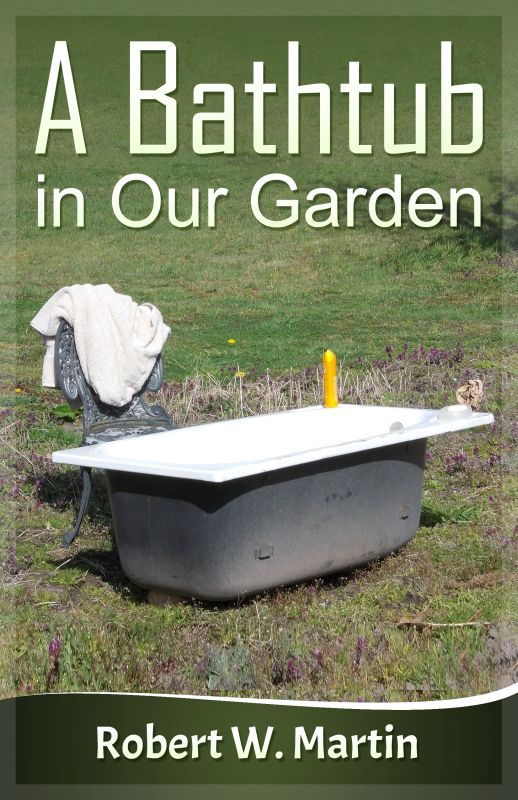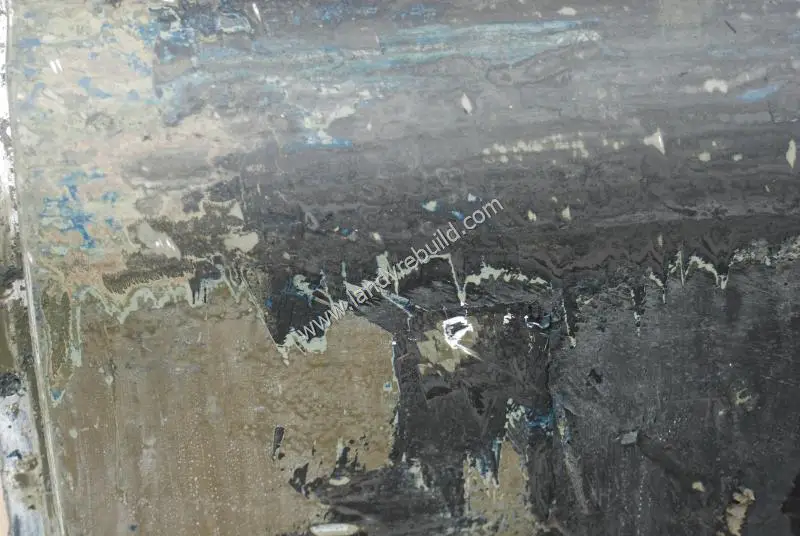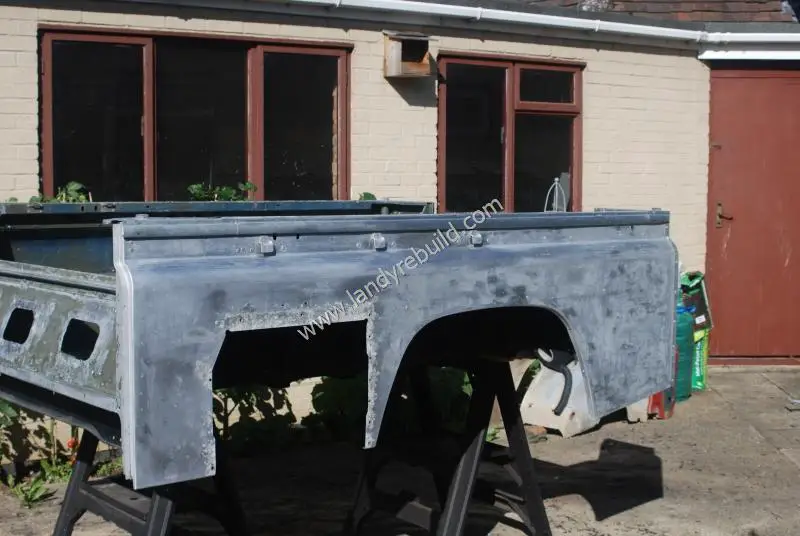One question almost guaranteed to be asked by any Land Rover owner concerns paint stripping.
The thing is, the large flat panels and generally rugged appearance make them ideal vehicles for the hobbyist. After all, a blemish here or a scratch there isn't really noticeable. But if you happen to own an ex-army vehicle, you've generally got a different problem. As the saying goes, "If it moves, salute it. If it doesn't move, pick it up; and if you can't pick it up, paint it". (Actually we used to add "If it's shiny, I'll have it".) 😉
Well, unless you've arrived on this page via a search engine, you may have noticed the photo on the front page of this site. Now contrary to what you may have thought, my 110 is surprisingly not ex-army. But it's certainly been painted as though it was (and I'm not just referring to the tiger stripe colours!)
As an example, the rear body has the following layers of paint in sequence from the bare aluminium outwards:
- Greenish primer coat.
- Black.
- White. (What? On top of black?)
- Olive green.
- Sandy greenish brown.
- Blue.
- Olive green. (Make your blooming mind up will you!)
- Black. (Groan)
- Olive green (Oh for goodness' sake)
- Black stripes in places (consisting apparently of bituminous road paint).
Ladeeeees and Gentlemen!
Landeeeeeerebuild brings you once again, at enormous expense, the title fight for paint stripper of the year!
Seconds out!
Round ONE!
<Ding>
Nitromors. The readily-available paint stripper. Yes it does work. You have to paint it on fairly thickly though, and not let it dry out. The problem starts when you try removing the bubbled paint - you have to use a scraper - and I found that this was then scratching the aluminium panel. It also only removes one or two layers at a time.
Update: Production of this ended in December 2010, because it contained dichloromethane, which was banned in the EU. There's now a new formulation out. Called "New Formula All-Purpose Paint and Varnish Remover". If you're lucky it may gently remove a single layer of peeling varnish from an old oil painting (I haven't of course tried this), but when it comes to removing automotive paint, save your money. You're better off trying something else.
Round TWO!
<Ding>
Heat. Either a super-powerful hairdryer or a butane gas torch. Well, I had one (a butane gas torch, not a hairdryer), so I thought I'd try it. It doesn't work very well and you have to be careful not to warp the aluminium.
Round THREE!
<Ding>
Sandblasting. Paint stripping with very fine sand (I have a Karcher washer with sandblasting attachment). Works quite well but uses HUGE amounts of water and EVEN MORE sand. (A friend suggested I ship the thing to the Sahara and once all the paint is off ship it back again). I did consider it. But even with fine sand, I found that it marked the aluminium - I believe it also hardens it, making it brittle.
Round FOUR!
<Ding>
Steam. As I had a wallpaper stripper I thought I'd give it a go. It takes off about 1⁄8 of a layer at a time so I'd still be at it when it's time for the next millenium celebration.
Ladeeeees and Gentlemen!
Keeeeeep your seats please! The contest is hotting up, with only three rounds to go. Four contenders have been eliminated! Please purchase your popcorn now.
Seconds out! Rooooound FIVE!
<Ding>
Cirrus Removall 520. This apparently had a good write-up in Practical Classics magazine. Expensive. Does it work? Yes. Sort of. It's a lot more pleasant to use than Nitromors but has similar results; in other words you need to scrape the bubbled paint off.
Round SIX!
<Ding>
The angle grinder. With wire brush/and/or/sanding disc. No, not really. I didn't want to try using it on an aluminium panel. Certainly it would have taken the paint off. And I would have had much thinner panels afterwards.
FINAL ROUND!
<Ding>
(We interrupt this contest to bring you some news from our sponsors.)
Book Two in the series.
Available in paperback and for Kindle:

Book One also available
in paperback and Kindle:

Ladeeeees and Gentlemen!
Aaaaaand the winner, by a knockout, is:
Stripper NB-510
Manufactured by Strippers Paint Removers, this is a two-part stripper. I was a bit surprised when the courier turned up carrying a 5 litre plastic container with an address label stuck on the side. This is referred to as Part "A". But there was also a small parcel containing the safety data sheet and the activating compound (Part "B"). All you do is mix Part A and Part B in a 10:1 ratio, and paint the stuff on to the panel with a brush (although they do specify not to use one with plastic bristles). Wait a couple of hours, then use a pressure washer. (They recommend a hot water pressure washer but I used ordinary cold water).
What a result! In most places all ten layers of paint came off in one go. A few areas needed a second treatment (obviously I hadn't painted the stripper on thick enough).
Here's the result - one side done.
Update: There's no point in looking for this product any more. I have been informed by the company which manufactured it that Stripper NB-510 has also been discontinued due to the ban on products containing dichloromethane (see Nitromors at top of page). Although it is still available to "professionals", as a DIY person you probably won't be able to get it. Apparently it has been replaced by a product they call Solvistrip. I have no idea if it is as effective.

